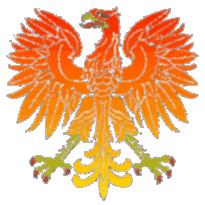
![]()

![]()
Creation:
Heaven: Sons of Svarog, the main Slavic gods associated with formal rituals.
Earth:
Underworld:
Lesser Gods:
The Little People: Can be helpful, but are easy to annoy, normally resulting in disfigurement or death.
* - Brownie indicates short, brown-skinned, man-shaped spirit.
Mythical Beasts/People:
Notes:
The number three: Slavs really like the number three, and tend to group things in threes whenever possible. Nine is the second most popular, being three threes. Many folk tales are about three brothers, with the youngest always winning. Heaven-Earth-Underworld, Rod-Lada-Svarog, Svarog's sons, Zemlya-Kupala-Veles, the Zori, the Bogatyri, all triads.
Rod's Egg: The Slavs continue to honor the Egg by incorporating it into the celebration of Easter. The ultimate expression of the Egg are those created by the House of Fabrege for the Tsars, used as Easter presents beginning with Aleksandr III.
Burial rituals: The early Slavs cremated the dead to help the soul rise up to Heaven, also a reasonable practice when bears and wolves live in the area. The Christian practice of burial can't have been an easy sell, a grave was closer to the Underworld, further from Heaven, and not easy to dig six months of the year because of frozen ground. I would not be surprised to find that for an extended period after the Baptism of the Rus, locals told the priest that a bonfire was needed to thaw the ground for burial, whereupon they cremated the body in secret and buried an empty coffin with the priest in attendance.
Hell must have been another problem, as fire was sacred to the Slavs, and cold was death. I'm not sure how much of a threat burning in Hell was to most Slavs. It was probably similar to imprisoning a Orthodox monk. Prison would be a general improvement in living conditions for most Orthodox monks, who tended to live in hand-dug caves with barely enough room to crouch in.
Death: Homicide and suicide were the only types of death that were not considered natural. All other causes were considered the will of one god or another.
Sacrifices: The usual ritual sacrifice amounted to a barbeque, with the animals burned, and then eaten by the congregation. Most gods were satisfied with a 'cockerel past crowing', but sometimes, goats, sheep, and cattle were needed. (Veles wasn't into poultry.) Human sacrifice was not a feature of the old Slavic religion.
Temples: Early 'temples' for most ritual sects consisted of an oak grove surrounded by a circle of stones, or a moat. Some featured statues, but there didn't seem to be an absolute requirement for images. It was much later, near cities, that buildings were constructed for worship, and images became a regular feature. The early circles tended to be for a single god, while the buildings were polytheistic.
Oak trees: The hardwood oak tended to be struck more often by lightning, provided long burning fuel for the winter fires, was the source of charcoal for forges, and provided animal feed in the form of acorns. It was sacred to all the major gods.
Perun: By the time of St. Vladimir, Perun was more war-like, probably the Viking/Thor influence. While always a god of warriors, Perun was more of a Defense God, than a War God in earlier times.
Bears: I'm surprised that there aren't more bear stories. I guess familiarity does breed contempt. Bears have been trained by the Slavs for centuries. The primary use of bears in elder times was to locate bee hives. The Slavs traded honey to the Vikings, who used it to make mead, and the wax was traded to the Byzantine Empire, to be made into candles. The Russian word for bear is Medved, a compound word derived from the roots of Honey and Seer/Witch, reflecting the bears use in the search for honeycombs. The United States spent years thinking of the Russian Bear as a Grizzly, when it was closer to Winnie the Pooh.
Major Holidays: The Equinoxes were the major Slavic holidays. The people witnessed the battle between the White God (Belobog) and the Black God (Chërnobog). Of course, the White God always won in the Spring, and the Black God in the Fall. Rations would have been short for the Spring Equinox, but people would celebrate the coming warmth and begin their preparations for planting. There was more food in the Fall, but the Black God's victory was a warning of the hard times to come.
This was the cycle of Slavic life:
All information is believed to be accurate, but it is, after all, only the opinion of someone born more than a millennium too late to check the facts. This is not an academic paper, so I don't intend to 'defend' my conclusions. It is based on talking to Slavs, reading folk lore, reading Campbell, copies of original documents, surfing the 'Net, and allowing things to percolate. There is no way to reach definitive conclusions, especially concerning goddesses. The Slavs lived in an area of transit and were affected by the waves of people who came through on their way to Europe, to and from the Byzantine Empire, and traders with the East. As the Slavs didn't have a written language during the period of the old gods, most of what is known depends on oral tradition. Most early documents were produced by the Church, which means unbiased descriptions cannot and should not be expected.
Looking for information on the Norse religion faces the same obstacle: by the time things were written down, the people doing the writing were Christians discussing mythology. There are no real sources from believers. The Greek and Roman religions are better understood because believers wrote about them.
Links: